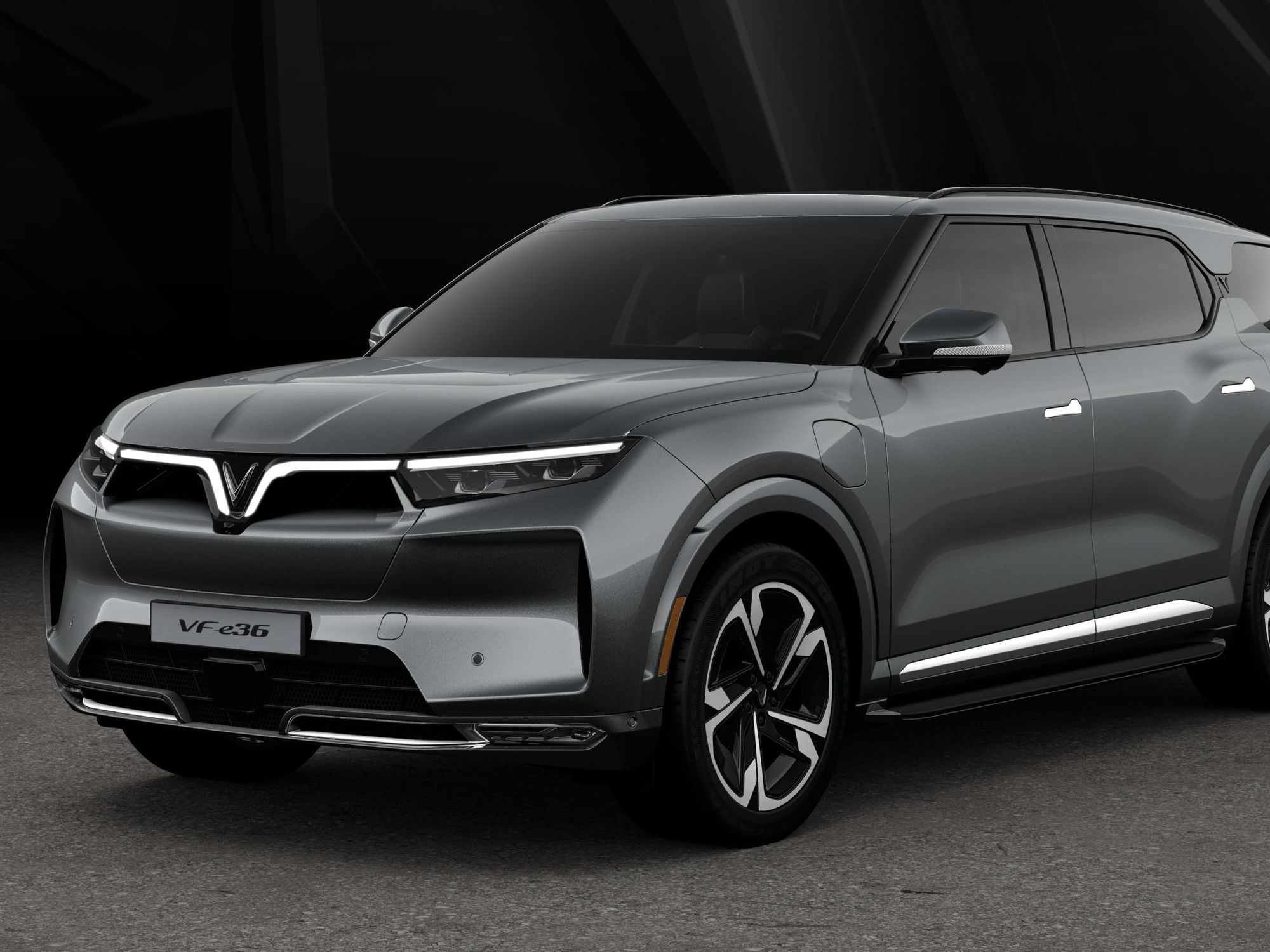Autonomy Expands Vinfast Partnership to Replace Traditional Leasing With Subscriptions for Car Ownership
David Shultz reports on clean technology and electric vehicles, among other industries, for dot.LA. His writing has appeared in The Atlantic, Outside, Nautilus and many other publications.

Despite unveiling its third and fourth U.S. production models at the LA Auto Show last week, auto manufacturer Vinfast has yet to deliver any electric vehicles here in the United States. But this doesn’t appear to be a concern for Santa Monica-based Autonomy. On the same day Vinfast unveiled its new VF6 and VF7 platforms at the auto show, the EV subscription company announced that it had purchased another 2,500 Vinfast VF8 and VF9 vehicles in a deal worth roughly $100 million, according to Autonomy CEO Scott Painter.
The deal is part of Autonomy’s plan to upend the traditional leasing/buying models for car ownership and replace them with a subscription model that relies less on credit and long term contracts. The idea is to lower the barrier for entry into the EV market for customers who may have previously been priced out. In order to do that though, Autonomy needs cars. Lots of them. Vinfast seems to have turned a corner in their supply chain and manufacturing, or at least the company thinks it has. The 2,500 new vehicles are expected to be delivered over the course of 2023, and will serve markets in California, Arizona, Florida, Texas and Washington state.
Back in August, Autonomy went on a buying spree, purchasing 23,000 electric vehicles from 17 different manufacturers. That deal included 400 of Vinfast’s VF8s and VF9s. The expansion of the partnership—2,100 additional vehicles—seems to signal that Autonomy believes in the car company and its tech. “Part of our earlier order included an order for some Vinfast cars,” says Painter. This is Vinfast coming back to us and saying, ‘This is how many cars we can get you over 2023.’“You're going to hear a lot of these [announcements] with every OEM. Everybody's got different volumes and different orders. But this is the next bounce in the process for us.”
Painter says the company has driven the Vinfast products and feels confident enough to move forward with the deal. Nonetheless, since the cars are so new, there’s no way to validate their long term reliability or how much demand they’ll get from current subscribers. But the influx of equipment will also serve as a nice testing ground for Autonomy as they integrate their telematics and software into a new platform. “The ability to know where the car is—latitude, longitude, mileage, and how it's being driven—is the key to unlocking much of the subscription value proposition,” Painter says.
Despite its roots in Vietnam, Vinfast has its US headquarters in Los Angeles and is manufacturing its vehicles in a plant in North Carolina. Which should make its VF8 and VF9 platforms eligible for at least some of the rebate money in the Inflation Reduction Act. With a comparatively low starting price of $40,700 the VF8 is a particularly interesting entree into the U.S. market. But that price doesn’t include the cost of the battery.
Vinfast, for better or worse, has adopted a unique strategy in which users will lease their car’s battery over time. This model should allow owners peace of mind that if something goes wrong with the battery, they won’t be on the hook to cover the entire cost of replacement. But with EV sticker prices so high to begin with, it’s unclear how consumers will respond to the added monthly payment of either $169 or $219 per month, depending on the model. Autonomy, however, bought the cars outright with battery included, and customers won’t have to pay an additional fee every month if they choose a Vinfast car subscription.
All of this makes Vinfast one of the few OEMs that’s confident it will be able to deliver large-ish numbers of vehicles next year. A proposition that bodes well for Autonomy: “Good for them,” says Painter. “They fixed some of their supply chain issues and got their factories up and going.”
- The LA Auto Show Proves That EV Adoption Still Has A Ways to Go ›
- Electric Vehicle Startup Vinfast Targets 2023 for Public Offering ›
- Vinfast's Vf8 'City Edition' EV Is Here — with Less Range - dot.LA ›
- US Operations at Risk as VinFast Faces Layoffs - dot.LA ›
- What Vinfast's Poor VF 8 Performance Means for the Company - dot.LA ›
David Shultz reports on clean technology and electric vehicles, among other industries, for dot.LA. His writing has appeared in The Atlantic, Outside, Nautilus and many other publications.





 Image Source: Tinder
Image Source: Tinder Image Source: Apple
Image Source: Apple